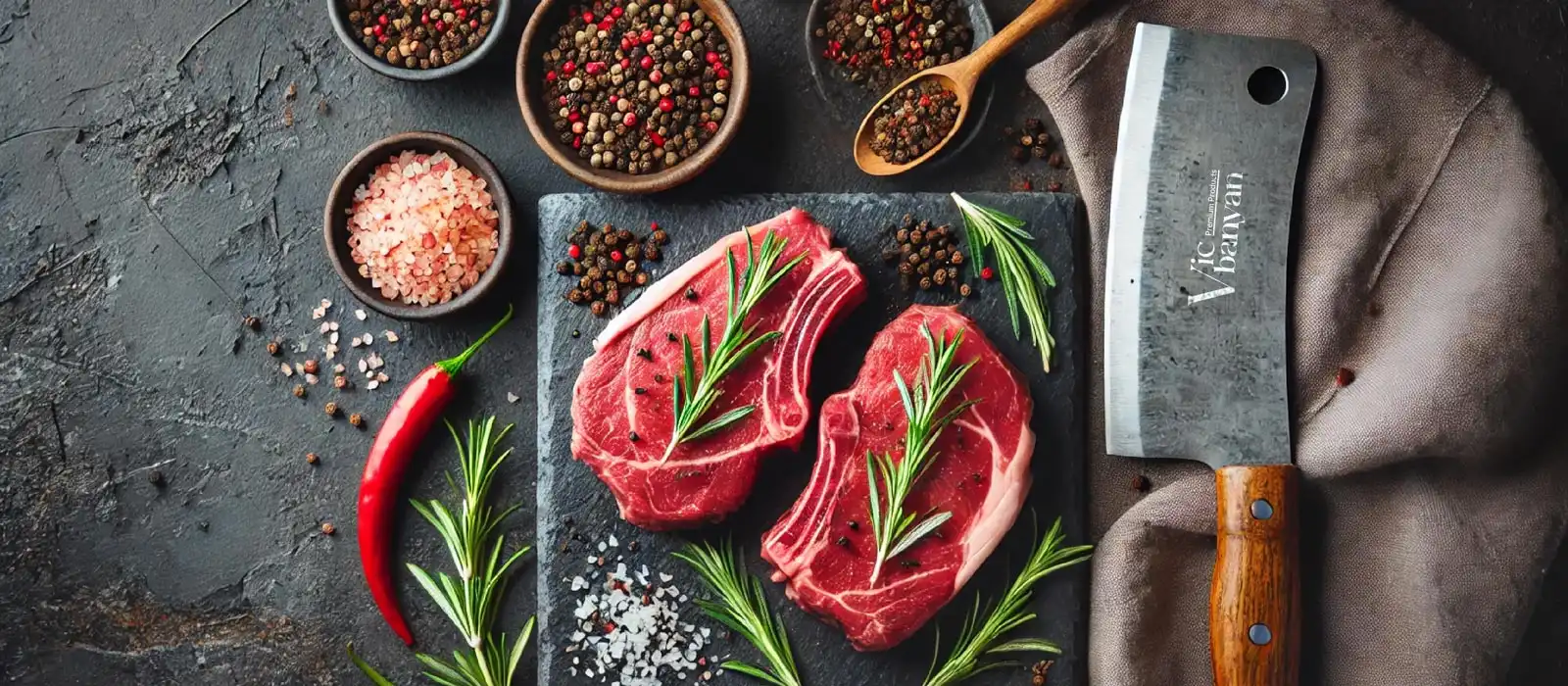Introduction
Selecting the right beef cut is crucial for the success of your recipes. Whether you’re preparing a casual family dinner or a gourmet feast, the beef cut you choose can significantly affect the flavor, texture, and overall enjoyment of the meal. This article will guide you through the various beef cuts, their best uses, and how to choose the best beef cuts for your specific recipes. Understanding these aspects will enhance your culinary skills and ensure your dishes turn out perfectly every time.
Understanding Beef Cuts
Beef cuts are divided into primal cuts, which are the initial sections from which steaks and other subdivisions are made. These primal cuts include the chuck, rib, loin, round, brisket, flank, and plate. Each of these sections has unique characteristics that make them suitable for different types of recipes and cooking methods.
- Chuck: This is the shoulder area and includes cuts like the chuck roast and shoulder steak. It’s known for its rich flavor and is best for slow-cooking methods.
- Rib: Located in the rib area, this section includes ribeye steaks and prime rib. These cuts are tender and well-marbled, making them ideal for grilling and roasting.
- Loin: Divided into the short loin and sirloin, this area provides some of the most tender cuts like tenderloin (filet mignon) and T-bone steaks. They are best cooked quickly using high heat.
- Round: This section includes the rump and hind leg. Cuts like round roast and eye of round are lean and best suited for roasting or braising.
- Brisket: Found in the chest area, brisket is flavorful but tough and requires slow cooking methods like smoking or braising.
- Flank: Located on the underside, the flank steak is lean and flavorful, best cooked quickly at high temperatures.
- Plate: This section includes skirt steak, which is similar to the flank but more marbled, making it good for grilling and stir-frying.
Popular Beef Cuts and Their Uses
- Ribeye
- Description: Ribeye steaks are known for their rich marbling and tenderness.
- Best Cooking Methods: Grilling, broiling, or pan-searing.
- Popular Recipes: Ribeye steak with garlic butter, grilled ribeye with herb marinade.
- Tenderloin (Filet Mignon)
- Description: The most tender cut of beef, with a mild flavor.
- Best Cooking Methods: Pan-searing followed by oven roasting.
- Popular Recipes: Filet mignon with red wine sauce, bacon-wrapped filet mignon.
- Sirloin
- Description: Sirloin is less tender than ribeye or tenderloin but has a robust flavor.
- Best Cooking Methods: Grilling, broiling, or pan-searing.
- Popular Recipes: Grilled sirloin steak with chimichurri, sirloin steak stir-fry.
- T-Bone and Porterhouse
- Description: These cuts include a T-shaped bone with meat on both sides, tenderloin on one side, and strip steak on the other.
- Best Cooking Methods: Grilling or broiling.
- Popular Recipes: Grilled T-bone steak with herb butter, porterhouse steak with garlic mushrooms.
- Brisket
- Description: Brisket is a flavorful but tough cut that benefits from slow cooking.
- Best Cooking Methods: Smoking, braising, or slow roasting.
- Popular Recipes: Smoked brisket, braised brisket with onions.
- Chuck
- Description: Chuck cuts are flavorful and ideal for slow-cooking methods.
- Best Cooking Methods: Braising, slow cooking, or roasting.
- Popular Recipes: Pot roast, beef stew.
- Flank
- Description: Flank steak is lean and has a robust flavor.
- Best Cooking Methods: Grilling or broiling.
- Popular Recipes: Grilled flank steak with chimichurri, steak fajitas.
- Round
- Description: Round cuts are lean and best suited for slow cooking or roasting.
- Best Cooking Methods: Braising, roasting, or slow cooking.
- Popular Recipes: Roast beef, beef round steak with mushroom gravy.
Factors to Consider When Choosing Beef Cuts
- Recipe Requirements
- Different recipes call for different cuts of beef. For example, a slow-cooked stew benefits from a cut like chuck, which breaks down well over time, while a quick stir-fry is best with a tender cut like sirloin.
- Examples: Use brisket for smoking, ribeye for grilling, and chuck for braising.
- Cooking Methods
- The cooking method you plan to use should influence your choice of beef cut. Tender cuts like tenderloin and ribeye are best for quick, high-heat methods like grilling, while tougher cuts like brisket and chuck are suited for slow cooking.
- Tips: Ensure you match the cut to the cooking method for the best results.
- Quality Grades
- Beef is graded by the USDA based on marbling and age. Prime grade has the most marbling and is the most tender, followed by Choice and Select.
- Look for marbling when selecting beef, as more marbling typically means more flavor and tenderness.
- Budget Considerations
- While premium cuts like ribeye and tenderloin are delicious, they can be expensive. More affordable cuts like chuck and round can also be very flavorful when cooked properly.
- Balance your budget with your recipe requirements to choose the best cut for your needs.
Tips for Buying and Storing Beef
- Buying Tips
- Look for bright red color and avoid beef with brown or gray spots.
- Check the fat distribution; good marbling indicates a flavorful and tender cut.
- Consider the source of your beef; grass-fed and organic options might offer better flavor and health benefits.
- Storing Tips
- Store beef in the coldest part of your refrigerator and use it within a few days for the best quality.
- For longer storage, freeze beef in airtight packaging to prevent freezer burn. Label packages with the date so you can keep track of their age.
Common Mistakes to Avoid
- Overcooking or Undercooking
- Different cuts require different cooking times and temperatures. Overcooking a tenderloin can make it dry, while undercooking a brisket can leave it tough.
- Use a meat thermometer to ensure your beef is cooked to the right internal temperature.
- Choosing the Wrong Cut for the Recipe
- Ensure you select the appropriate cut for your recipe. Using a tough cut for a quick-cooking method can result in a chewy, unappetizing dish.
- Follow recipe recommendations or consult a butcher if unsure.
- Ignoring the Importance of Resting Meat
- Allow beef to rest after cooking to let the juices redistribute, resulting in a juicier and more flavorful dish.
- Rest meat for at least 5-10 minutes before slicing or serving.
Conclusion
Choosing the best beef cuts for your recipes is essential for achieving the desired flavor, texture, and overall success of your dishes. By understanding the characteristics of different cuts, considering your recipe and cooking method, and following proper buying and storage tips, you can make informed decisions and enhance your culinary creations. Don’t be afraid to experiment with different cuts and techniques to discover your favorite ways to enjoy beef. Happy cooking!


